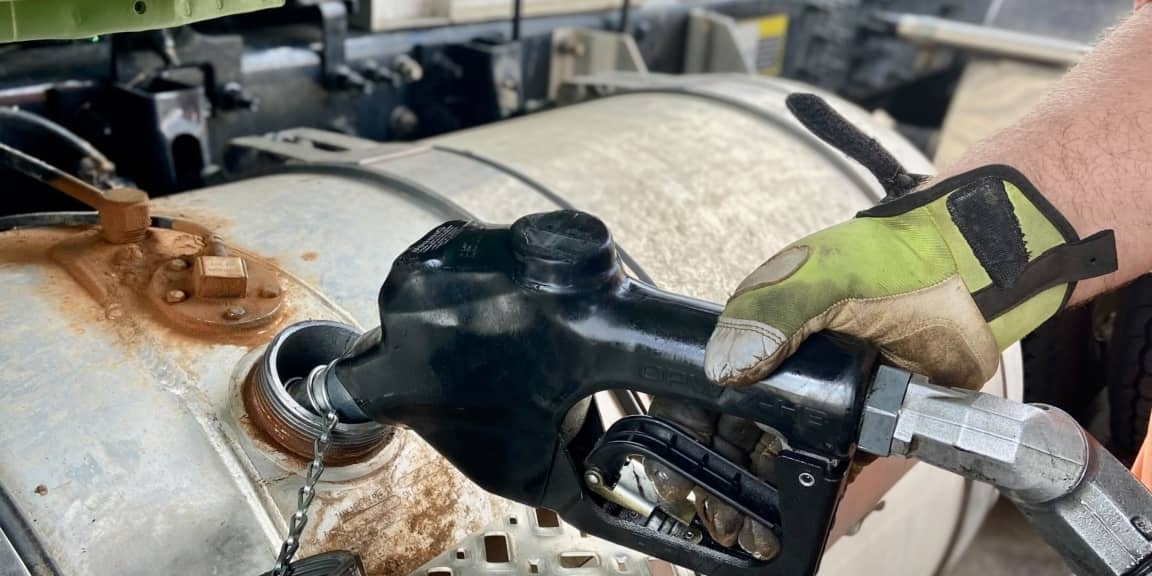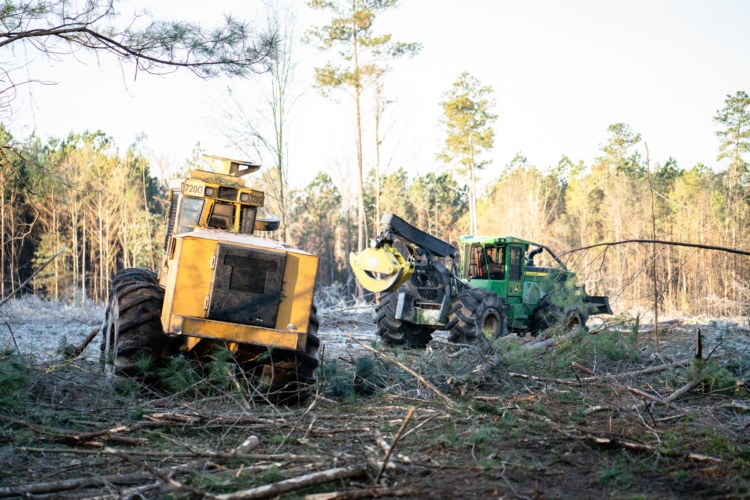Goodbye, Bobby
After watching Bobby Goodson of Swamp Logger’s YouTube video announcing he is shutting down his operation on account of fuel and other cost pressures, I wanted to share some thoughts and reflections on the current state of fuel prices in the industry.
At Bellwether Forest Products, we will use approximately 850,000 gallons of diesel fuel this year. That’s 500,000 gallons in our trucks on the road and 350,000 gallons in our equipment in the woods. With the help of this fuel our teams will harvest and transport about 700,000 tons of timber from forest to market for end uses such as lumber, paper, packaging, biofuel, utility poles, and more.
Since January 1st, diesel fuel is up $2.00 per gallon, and is still climbing. The math is not hard. Even with no more price increases, I expect we will spend $1,700,000 more on diesel than budgeted when the year started. That works out to an increase of about $2.43 per ton which, even before considering general inflation in our industry, is a death knell without significant price support.
Rules of thumb are broken, doing the math never goes out of style
Bobby states his typical rule of thumb for log truck costing was that fuel should be about 25% of the truck’s revenue but that now “the cost of fuel for our trucks is up to about 68% of what the truck makes.” While the actual amount of revenue required to safely and sustainably run a log truck is the subject of another post, it’s reasonable to expect that when fuel prices double in a short period of time, the percent of revenue spent on fuel is also going to increase, and rules of thumb will be broken. This is why it is important to do the math.
While Bobby’s 25% rule generally checks out with our historical experience, my estimate of our current percent is different. As of May 13, I estimate we are currently spending 40% of the truck’s revenue on fuel. This includes all the pricing support we are receiving from our customers collectively to date (leaving no other pricing support to allocate to general inflation). Without recent price support the figure would be closer to 50% of truck revenue. So what our customers have done has been critical, substantial, and appreciated. Unfortunately, when combined with general inflation around logging and hauling, and inconsistent and delayed implementation, I agree with Bobby, more price support is still needed.
Fuel surcharges: Tough to come by for small fleets, difficult to gauge in timber stumpage contracts
It is worth mentioning this is not just a forestry transportation issue. As the Wall Street Journal points out, “Trucking companies generally can cover rising diesel prices through fuel surcharges that are built into contracts. But the thousands of smaller fleets and independent owner-operators that make up the bulk of the highly fragmented truck market have a harder time passing along the added expenses.”
This is very true of the fragmented forest products transportation market which relies heavily on informal contracts in the Southeastern “stumpage” sale model, where a mill buys timber from landowners via an intermediary broker or “dealer” who is responsible for accurately pricing in and passing on the costs of the harvesting and transportation services required to deliver.
These open market agreements between mills and brokers/dealers (which can be hundreds of thousands of dollars more) are often informally recorded and most do not include a systematic fuel price adjustment mechanism. However, on the landowner side, formal contracts are signed by brokers to buy the timber at fixed prices, set by a competitive bidding process, awarded to the highest bidder, and guaranteed for 12-18 months (to plan harvest around weather and demand). Combine these factors with a general lack of job costing knowledge in the broker set and you get a price structure with limited flexibility to share input cost increases, which leads to huge business risk being placed on lightly capitalized small businesses in times like these. And since trucks and equipment require fuel, and fuel requires immediate and timely payment, these risks become apparent fast.
Additionally, when pricing support is received it can be difficult to figure how sufficient it really is as customers provide fuel surcharge compensation in different ways. Some provide surcharges at the weekly settlement level, while others do at the load/transaction level. Some provide it per ton while others per mile. Some provide distance specific support, and some provide a flat number per ton no matter the haul distance. And often the timeframe for the adjustments, or whether they will continue to increase/decrease with future changes, is not known. So not only is there stress from huge fuel price increases threatening the viability of a business, there is also anxiousness related to uncertainty and a lack of standardization in the process.
Contract-level fuel indexing is a better solution
But I think there is a solution. A fair, unbiased, and much less time-intensive way to solve this exists. Here is my proposal:
(1) Mills and suppliers should implement a standard fuel price index to govern contracts between them. The adjustments should be based upon a commonly accepted index like the US EIA Lower Atlantic for Diesel and should include both transport and harvesting (cut-skid-load) costs. The supplier should be responsible for negotiating the terms related to how to implement the fuel price changes properly and fairly while accounting for the specific fuel usage in their harvest and haul types (e.g., Bobby’s fuel burn in swamp logging is likely higher per ton than Bellwether’s in mostly conventional environments).
(2) Mills should assign and communicate a haul distance and a base fuel price assumption at the time a price is agreed. This price serves as the baseline that was used to set the booked/agreed upon price which incorporates the distance and the fuel price. This information should be shared and aligned on as fuel and transportation is a significant and growing portion of the total delivered price.
(3) Pricing should be adjusted up or down at the time of harvest by comparing the base fuel price to the current index price. This could easily be done in a spreadsheet or other program and communicated transparently between mill and supplier, with no additional conversations or job-by-job negotiations necessary. It would protect the logger and transporter from fuel increases and fairly recalibrate delivered prices when fuel decreases.
In conclusion…
Someday an electrical or alternative energy transportation future may bring more stability to transport fuel prices. But until then a simple fuel index solution like this for stumpage contracts in the industry would provide more business certainty for loggers and haulers, give everyone in the industry a fairer deal in all fuel environments, and ultimately let us all spend more time and energy discussing the important industry issues we can influence.
In lieu of sensible fuel pricing systems like the above, decisions like Bobby Goodson’s do not surprise me. Forest products harvesting and hauling is a tough business in good times. And with new and used equipment prices high at the same time as input costs are at record levels, it is a great time for an individual to hang it up. Yet, the forest products industry as a whole is too important to leave uncontrollable fuel risk and uncertainty unaddressed.
In order to maintain a safe, healthy, and reliable supply chain, wood-products consumers would do well to put systems in place to automatically adjust for fuel price volatility. God bless Bobby Goodson and what he has done for the industry.
-Matt Moldenhauer, President of Bellwether Forest Products




